*NURSING > STUDY GUIDE > BIO 120 H1 FINAL EXAM STUDY GUIDE | BIO 120 FINAL STUDY GUIDE (All)
BIO 120 H1 FINAL EXAM STUDY GUIDE | BIO 120 FINAL STUDY GUIDE
Document Content and Description Below
UTSG BIO120H1 FINAL EXAM STUDY GUIDELecture 1 Saturday, October 3, 2015 3:20 PM Key Things To Know Dobzhansky Dobzhansky began analyzing the genes of wild fruit flies, traveling from Canad... a to Mexico to catch members of the species Drosophila pseudoobscura. He found that different populations of D. pseudoobscura did not have identical sets of genes. Each population of fruit flies he studied bore distinctive markers in its chromosomes that distinguished it from other populations. Dobzhansky helped discover that different fruit fly populations have different frequencies of two different versions of the same chromosome; chromosome A might be more frequent in one population while chromosome A' is more frequent in a neighboring population. If there was no standard set of genes that distinguished a species, what kept species distinct from each other? The answer, Dobzhansky correctly realized, was sex. A species is simply a group of animals or plants that reproduces primarily among themselves. Two animals belonging to different species are unlikely to mate, and even if they do, they will rarely produce viable hybrids. Dobzhansky ran experiments on fruit flies that demonstrated that this incompatibility is caused by specific genes carried by one species that clash with the genes from another species.If the members of a population of flies should breed among themselves more than with other members of the species, their genetic profile would diverge. New mutations would arise in the isolated population, and natural selection might help them to spread until all the flies carried them. But because these isolated flies were only breeding within their own population, the mutations could not spread to the rest of the species. The isolated population of flies would become more and more genetically distinct. Some of their new genes would turn out to be incompatible with the genes of flies from outside their own population. Darwin's Theory of Evolution - The Premise Darwin's Theory of Evolution is the widely held notion that all life is related and has descended from a common ancestor: the birds and the bananas, the fishes and the flowers -- all related. Darwin's general theory presumes the development of life from non-life and stresses a purely naturalistic (undirected) "descent with modification". That is, complex creatures evolve from more simplistic ancestors naturally over time. In a nutshell, as random genetic mutations occur within an organism's genetic code, the beneficial mutations are preserved because they aid survival -- a process known as "natural selection." These beneficial mutations are passed on to the next generation. Over time, beneficial mutations accumulate and the result is an entirely different organism (not just a variation of the original, but an entirely different creature find more resources at oneclass.com find more resources at oneclass.com Evolutionary History (macroevolution) – Determining the evolutionary relationships of organisms in terms of common ancestry – phLJlogeŶetiĐs. Hoǁ the past has shaped todaLJ͛s world. It involves affinities of organisms like taxonomy and systemic. Comparative data from biogeography, paleontology, morphology and development are used. Evolutionary Mechanisms (microevolution) – Determining the ecological and genetic mechanisms responsible for evolutionary change. It involves population-level studies of natural selection, adaptation and speciation using diverse organisms. Founder Events 1. An initially large population 2. A small group of individuals leave the large population and colonize a new area that is geographically or physically separated from the original population. 3. Due to chance alone - or to Genetic Drift - the genetic composition of the small colony differs from the large population. 4. Because of these genetic differences, the two populations are reproductively isolated when they come back into contact with one another. (Chance and genetic drift really are unlikely to be powerful enough to cause reproductive isolation.) Founder Events can Dramatically Change Gene Frequencies: Consider a founder event of two individuals (or one gravid female) •A ŵadžiŵuŵ of 4 alleles/loĐus aƌe tƌaŶsŵitted •Most ƌaƌe alleles ǁill ďe lost •AŶ oĐĐasioŶal ƌaƌe allele ǁill ŵake it thƌough •“taŶdaƌd theoƌLJ suggests fouŶdeƌ eǀeŶts should ďe ƌelatiǀely unimportant The rare allele will have a frequency of 0.25 Founder Flush Speciation Mayr and Carson suggested there was more to the theory •TheLJ had a ͞WƌightiaŶ͟ ǀieǁ of geŶetiĐs •Postulated that ƌaŶdoŵ ĐhaŶges iŶ geŶe fƌeƋueŶĐLJ ĐhaŶged the geŶetiĐ environment •Postulated that a peƌiod of ƌeladžed seleĐtioŶ ;the ͞flush phase͟Ϳ alloǁed edžteŶsiǀe ƌeĐoŵďiŶatioŶ •The fouŶdeƌ/flush pƌoĐess Đould lead to a geŶetiĐ ƌeǀolutioŶ. •The geŶetiĐ ƌeǀolutioŶ ǁould ďe the Đause of speĐiatioŶ. The Founder Flush process 1. An initially large population 2. A small group of individuals leave the large population and colonize a new area that is geographically or physically separated from the original population. 3. Due to chance alone - or to Genetic Drift - the genetic composition of the small colony differs from the large population. 4. During the flush phase recombination and relaxed selection allows the formation of a new adaptive gene complex 5. Because of these genetic differences, the two populations are reproductively isolated when they come back into contact with one another. Approaches and Assumptions in Evolutionary Biology There are four different approaches: observational, theoretical, comparative, experimental. Biodiversity and Adaptation Both are products of evolution. The latter is either a state or a process; any trait that contributes to fitness or the evolutionary process that leads to the origin and maintenance of traits. The former refers to the variety of life on earth. find more resources at oneclass.com find more resources at oneclass.comClonal Propagation Asexual reproduction in plants for example, water hyacinth. Bird Pollination Aids sexual reproduction in plants. For example, the mouse-tailed plant found in deserts. Many birds and plants are adapted to conduct this form of pollination. Perch Function A protruding stick-like part of a plant designed to provide a platform for the bird to land on in order to reach into the plant. Reproductive Success Passing on of genes in a way that allows the offspring to also pass on the same genes to their future offspring. Lecture 2 Saturday, October 3, 2015 4:03 PM Lamarck He came up with a linear rather than a branching view of evolution and went further to suggest a causal mechanism which was the inheritance of acquired characteristics. According to Lamarck, if a giraffe stretched its neck for leaves, a nervous fluid would make its neck longer and this trait would pass on to its offspring. This meant that organs or features which an organism did not find useful would disappear or shrink. Lamarck was wrong since somatic (body) cells have no function in inheritance which is mostly and only governed by the gametes. Weismann He pƌoposed the ͚geƌŵ-plasŵ͛ theoƌLJ of heƌeditLJ statiŶg that aŶd oƌgaŶisŵ has tǁo kiŶds of Đells. These tǁo Đells did not exchange information – variation originated from the germ cells. He rejected LaŵaƌĐkiaŶ ͚aĐƋuiƌed ĐhaƌaĐteƌistiĐs͛ Wallace He co-discovered the chief mechanism of evolution i.e. natural selection alongside Darwin. It occurred to him that animals and plants experience population pressures i.e. organisms cannot reproduce to their full potential. Many die before they become adults. He was in close correspondence with Darwin and even wrote him a letter. Lyell He wanted to find a way to make geology a true science. He argued that gradual changes had produced the featuƌes of the Eaƌth͛s surface and found evidence for many rises and falls of sea level. He came up with ͚uŶifoƌŵitaƌiaŶisŵ͛ aŶd fieƌĐelLJ iŶsisted that the pƌoĐesses that alter the Earth are uniform through time. His contributions allowed Darwin to decipher the history of the Canary Islands. Malthus His work in economics influenced the idea of population pressures. Inheritance of acquired characteristics (See Lamarck) Germ plasm theory (See Weismann) Gradualism Descent with modification (adaptation) Natural Selection Requirements for Evolution Reproduction, variation, and selective pressure. find more resources at oneclass.com find more resources at oneclass.comLecture 3 Saturday, October 3, 2015 5:40 PM Grant Research TheLJ ǁoƌked oŶ DaƌǁiŶ͛s fiŶĐhes shoǁiŶg that Ŷatuƌal seleĐtioŶ ĐaŶ soŵetiŵes ďe ǀeƌLJ stƌoŶg aŶd when it is, evolutionary change can occur rapidly. It has also shown that if you study a system long enough, you can make new discoveries. They documented the origin of a new specie; a speciation event. This did not agree with current data about speciation. Conducted the lost study of NS of beaks. Finches had different shaped beaks. Showed that beaks were diverging. Janzen Tropical ecologist, mark-recapture studies to see how far large bees travelled pollinating trees of the same species. Trap line foraging. Asked if the distribution of seedlings under a tree had anything to do with levels of fertility. Found that seeds that fell had low survival probability underneath the maternal parent since the pests on the tree have adapted to the defenses of the tree. And it is a waste competing with their offspring. Famous for coevolution/mutualism in ant-acacia of the pea family. These had thorns which had ants. The ants got benefits from the tree and vice versa. Tropical vs. Temperate Ecosystems Tropical – large number of species with great distances; trees are evergreen but wind pollination is tough in these forests, high diversity, animal population, dense canopies Temperature, diversity. Differences have an impact on pest pressure on plants. Biotic vs. Abiotic Factors Biotic – interactions between organisms which may or may not result in coevolution or mutualism Abiotic – physical factors; ice, wind. Dominate in places like Chile. Animal Pollination Showy bracts; butterflies. Control and Experimental group comparisons. Mutualism Co-evolution. Two species exist while relying one each other. Ant-plant mutualism. Pest Pressure Plant Herbivory Field Experiments Epiphytes Plants that grow on other plants; not parasitic. Use trees as substrates; aerial roots. There are many different forms in different families; convergent evolution. Convergent Evolution Long-distance dispersal Adaptive Radiation Gives us so much biodiversity. It is a process of speciation. Evolution of phenotypical within a rapidly multiplying lineage as a result of speciation. From a single common ancestor, we radiate many different species. Identified by four features: (1) has to be evidence of common ancestry, (2)cottelation between phenotypic function and environment, (3)rapid speĐiatioŶ. Most faŵous of DaƌǁiŶ͛s fiŶĐhes; he ŵade a mistake by mixing them up. Flightless Birds Same specie which flew in other places and whose ancestors flew have lost their ability to fly. Flightlessness is very common on islands. This evolved as a trait because flying is exhaustive. find more resources at oneclass.com find more resources at oneclass.comSexual Dimorphism Males and female look and behave differently. In birds, males are flashy and show off. The marine bird on the Galapagos Island. Endemism Geographical Isolation Darwin realized this when he found marine fossils on the mountains. Galapagos Islands A common ancestor split on these islands and adapt allowing exploitation of habitats and resources Volcanic Islands; 15. Very Old. Their flora and fauna got there by long-distance dispersal – biogeography DistiŶĐt ǀaƌiatioŶ; eaĐh islaŶd had a diffeƌeŶt speĐies. EŶoƌŵouslLJ iŶflueŶtial foƌ DaƌǁiŶ͛s theoƌLJ of evolution. Prickly pear cactus; colonized volcanic lands of Galapagos, bird disperse fleshy fruits by defecation. Two iguanas; one has radiated into the marine world. These have evolved mechanisms to deal with salinity. The other specie eats the prickly pear cactus. Australia It͛s a ĐoŶtiŶeŶt aŶd aŶ islaŶd; has ŵaŶLJ uŶiƋue adaptatioŶs aŶd high leǀels of eŶdeŵisŵs i.e. speĐies aƌe restricted to that area. Unique because of isolation. Gene flow has been restricted and without gene flow lineages are restricted. The tropical forests look like the others in the world; as a result of convergent evolution. Gum trees are very common; endemic to Australia. These burn very easily; contain chemicals which make the super combustible. Koalas have gum trees in their diet and they detoxify the leaves. Banksia is another life form in Australia which is an endemic and is pollinated by rodents. Lecture 4 Saturday, October 3, 2015 5:40 PM McClintock DisĐoǀeƌed ͚juŵpiŶg geŶes͛ iŶ ŵaize. DetaĐh fƌoŵ geŶoŵe aŶd ŵoǀe to aŶotheƌ plaǀe. TheLJ aƌise fƌoŵ mutations. They are transposable elements. Mendel His research contributed to our knowledge about how genes are transmitted. He saw traits were discontinuous. Discontinuous variability – two distinct variations, no intermediate. Inheritance is determined by discrete variables – genes. Particulate Inheritance – two copies of each gene. Fisher Genotype Genetic constitution of an organism. For example, Aa. Phenotype What you can see. Genome DNA Gene Functional unit of inheritance, unit of hereditary information located on chromosomes, DNA sequence composed of codons. Code for protein which make up an organism. Very important. Allele Mutation find more resources at oneclass.com find more resources at oneclass.comUltimate source of genetic variation. But if we study a given population, there can be other factors which mix up the variation. Mutations are often neutral in one environment and deadly/beneficial in another; these are context dependent. Point mutations, a common form, there is a change in a single nucleotide. Jumping genes, an insertion or deletion Repeats of nucleotides giving rise to a class of variability Chromosomal rearrangements, the most drastic kind of mutations. The genes are mistaken; not able to make protein, do not contain the right information. This is a very dramatic mutation. Instead of the organism being diploid, they are tetraploid. Rates of mutations are not fixed. Recombination Types of Mutation Homeotic mutation – basis of evo devo. SEE MUTATIONS Transposable Genetic Elements Fitness Effects of Mutations Blending and Particulate Inheritance The latter refers to the fact that each individual carries a copy of a gene from one parent and the other half from the other parent. Discrete vs. Continuous Traits In some cases, traits are not simply inherited. Continuous traits include height, weight. The differences are continuous because the trait is controlled by many genes. Continuous are controlled by many genes. Each of these has an impact on the phenotype. Mendelian vs. Quantitative Inheritance Fisher’s FuŶdaŵeŶtal Theoreŵ Brought genetic into evolution. States that the rate of increase in a fitness of a population at any time is equal to its genetic fitness. Not all genes mutate at the same frequency. It varies between species. MutatioŶs aƌe ĐoŶtedžt depeŶdeŶt. EĐologLJ aŶd eǀolutioŶ aƌe iŶteƌtǁiŶed ďeĐause theƌe͛s Ŷo suĐh thiŶg as an organism that does not live. Most genetic variation comes from sex. Mutation gives very little genetic variation. Polymorphism When we have discrete traits which can be put into categories, we call that a polymorphism. Because the differences are genetic, it is a genetic polymorphism. If there is coexistence of two forms, this is polymorphism. Two different forms; no intermediate. DOES NOT APPLY TO HEIGHT. Discontinuous Variation If one or two genes control a trait; Mendelian traits. Genes of large effect, controlling an entire phenotype. At the population level, this is polymorphism. find more resources at oneclass.com find more resources at oneclass.comLecture 5 Saturday, October 3, 2015 3:20 PM Measuring genetic variation is easier when you have polymorphism since you can easily tell which trait is varying for example, colour. Fisher, Haldane, Wright Bring into evolutionary biology genetics by mathematical contributions. Showed that continuous variation and DaƌǁiŶiaŶ Ŷatuƌal seleĐtioŶ ǁeƌe ĐoŶsisteŶt ǁith MeŶdel͛s laǁs. Demonstrate role of genetic variation in evolution. Their approach revealed how mutations arise and, if they are favoured by natural selection. Wright introduced the ͚adaptiǀe laŶdsĐape͛; the ǀaƌLJiŶg fitŶess of diffeƌeŶt ĐoŵďiŶatioŶs of geŶes as a hillLJ laŶdsĐape, the ǀalleLJs representing less-fit combinations and the peaks representing the fitter ones. Natural selection moves population towards the peak of the hills. Morgan Bred fruit flies and tried to create mutant flies with x-rays, acid etc. Saw the sudden occurrence of white eyes. He realized that a gene had been altered and it had produced a new kind of eye. He then bred the white-eyed fly with a red-eyed fly and got a generation of red-eyed hybrids and when he bred these, the resulting generation consisted of white-eyed flies. He established a new science; genetics [Show More]
Last updated: 1 year ago
Preview 1 out of 55 pages
Instant download
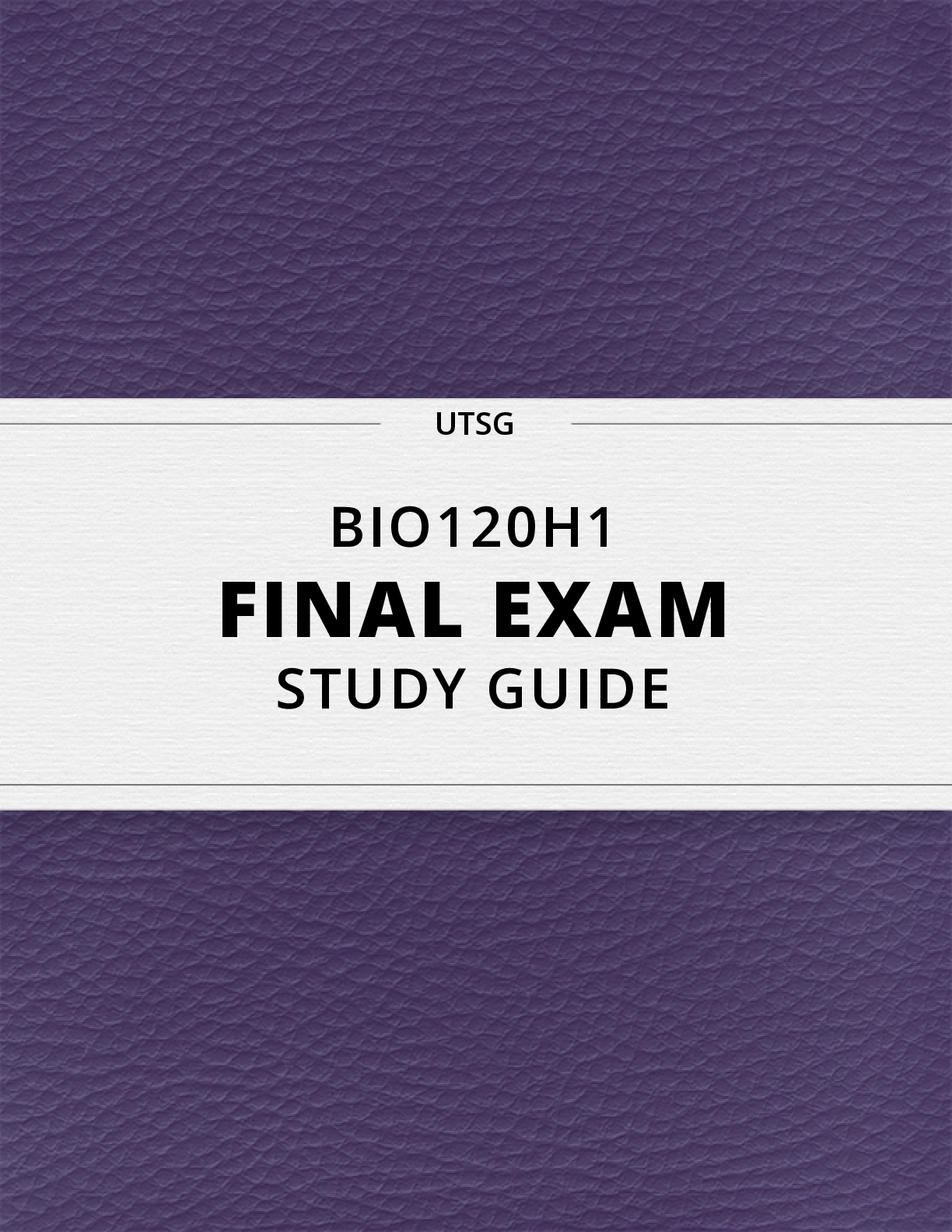
Buy this document to get the full access instantly
Instant Download Access after purchase
Add to cartInstant download
Reviews( 0 )
Document information
Connected school, study & course
About the document
Uploaded On
Apr 18, 2021
Number of pages
55
Written in
Additional information
This document has been written for:
Uploaded
Apr 18, 2021
Downloads
0
Views
40

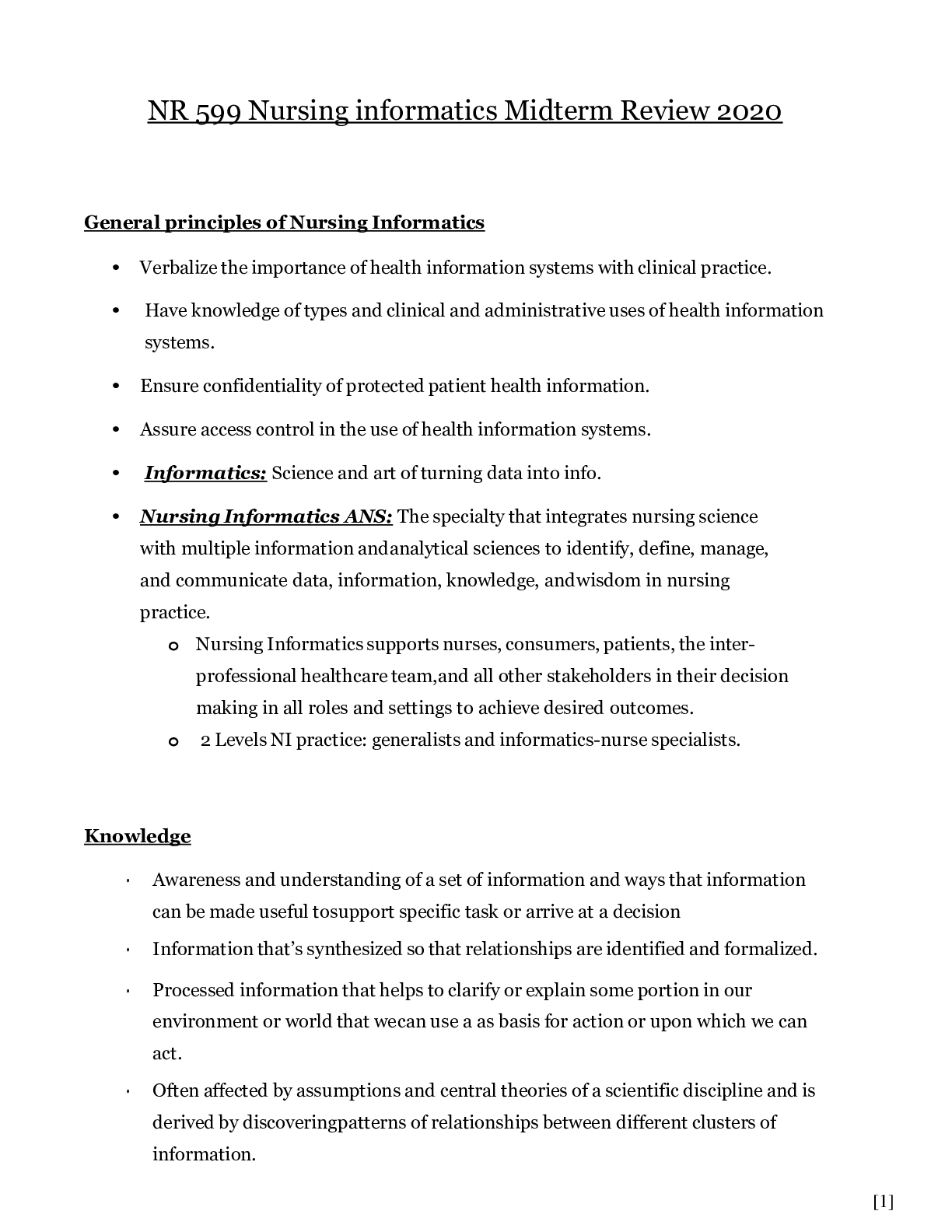

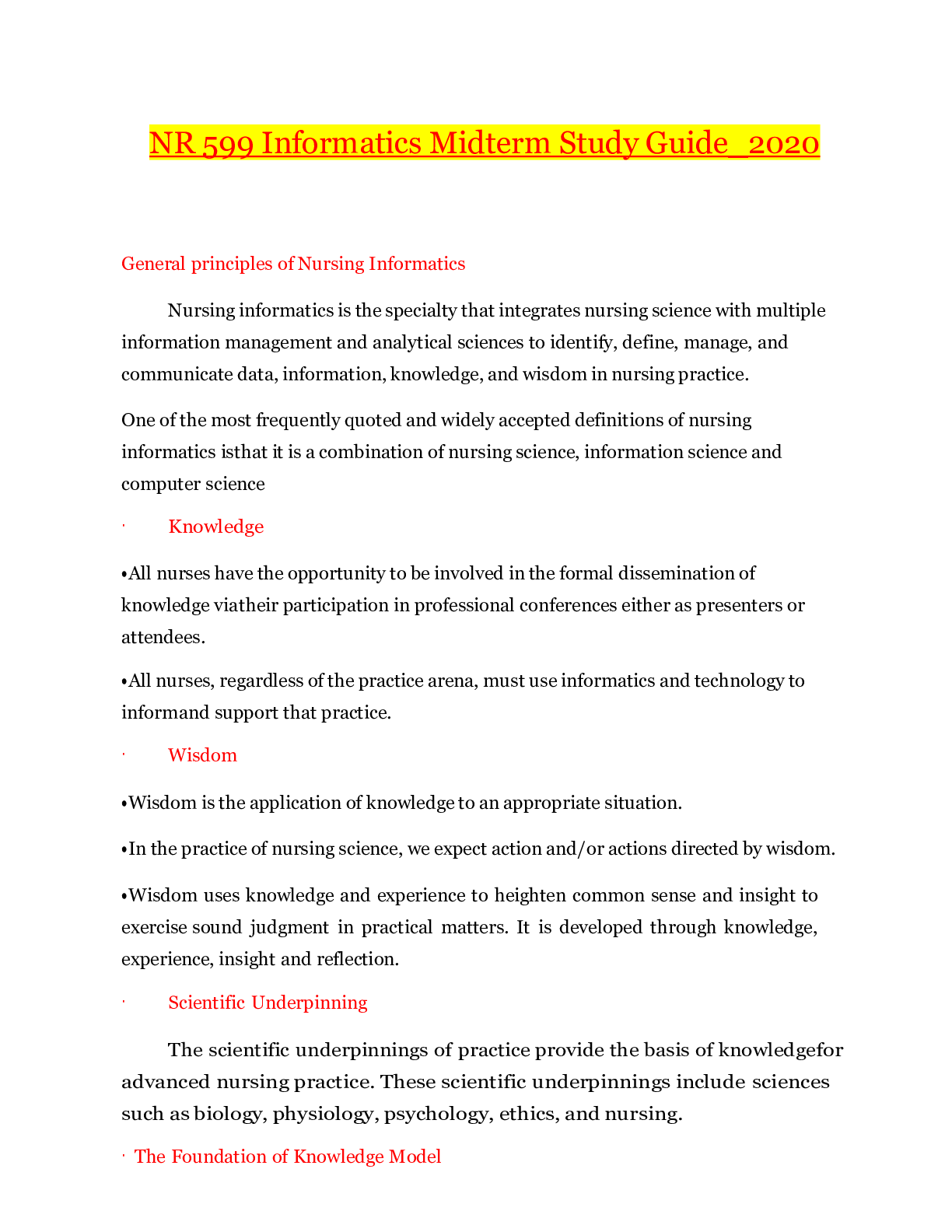
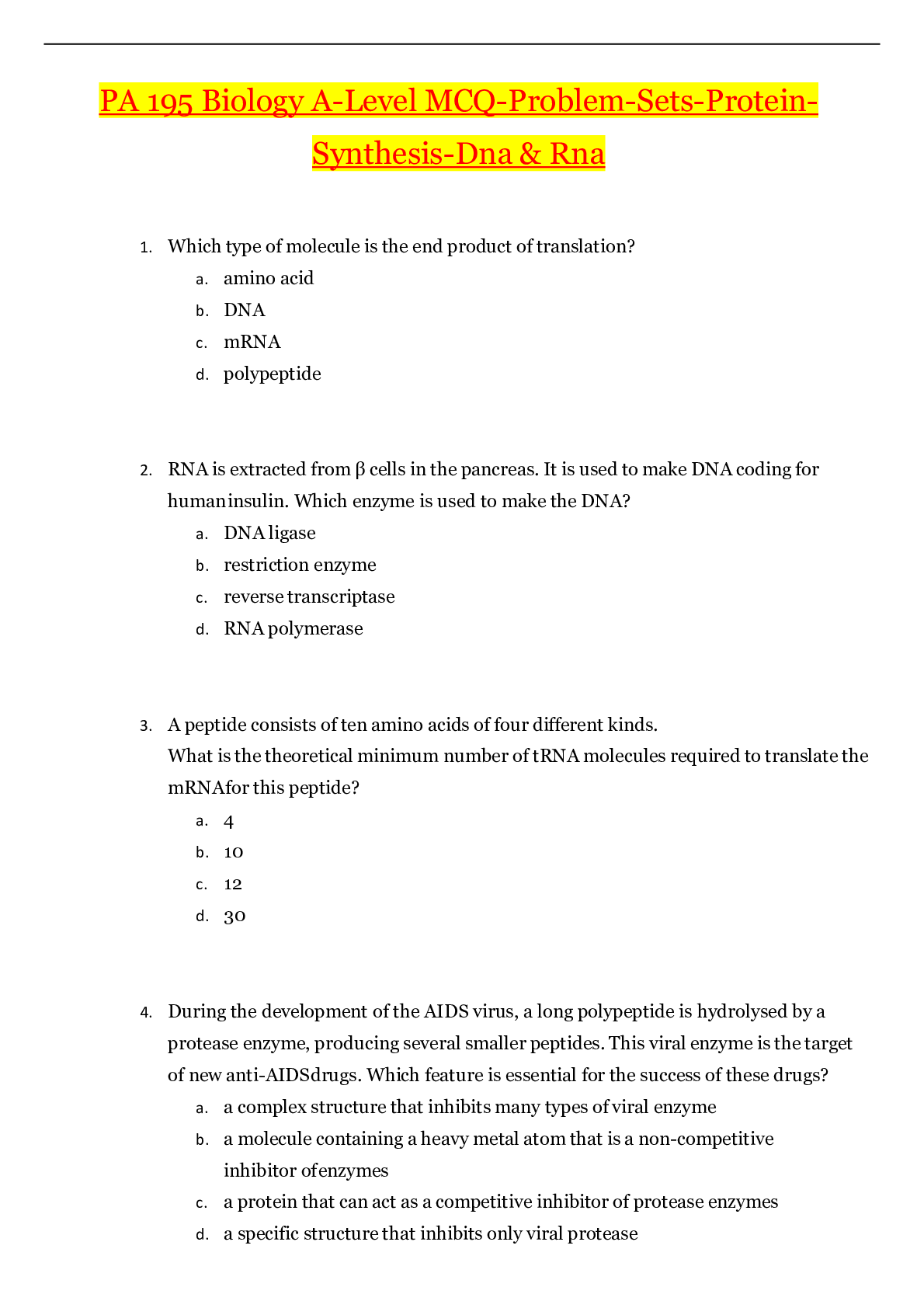
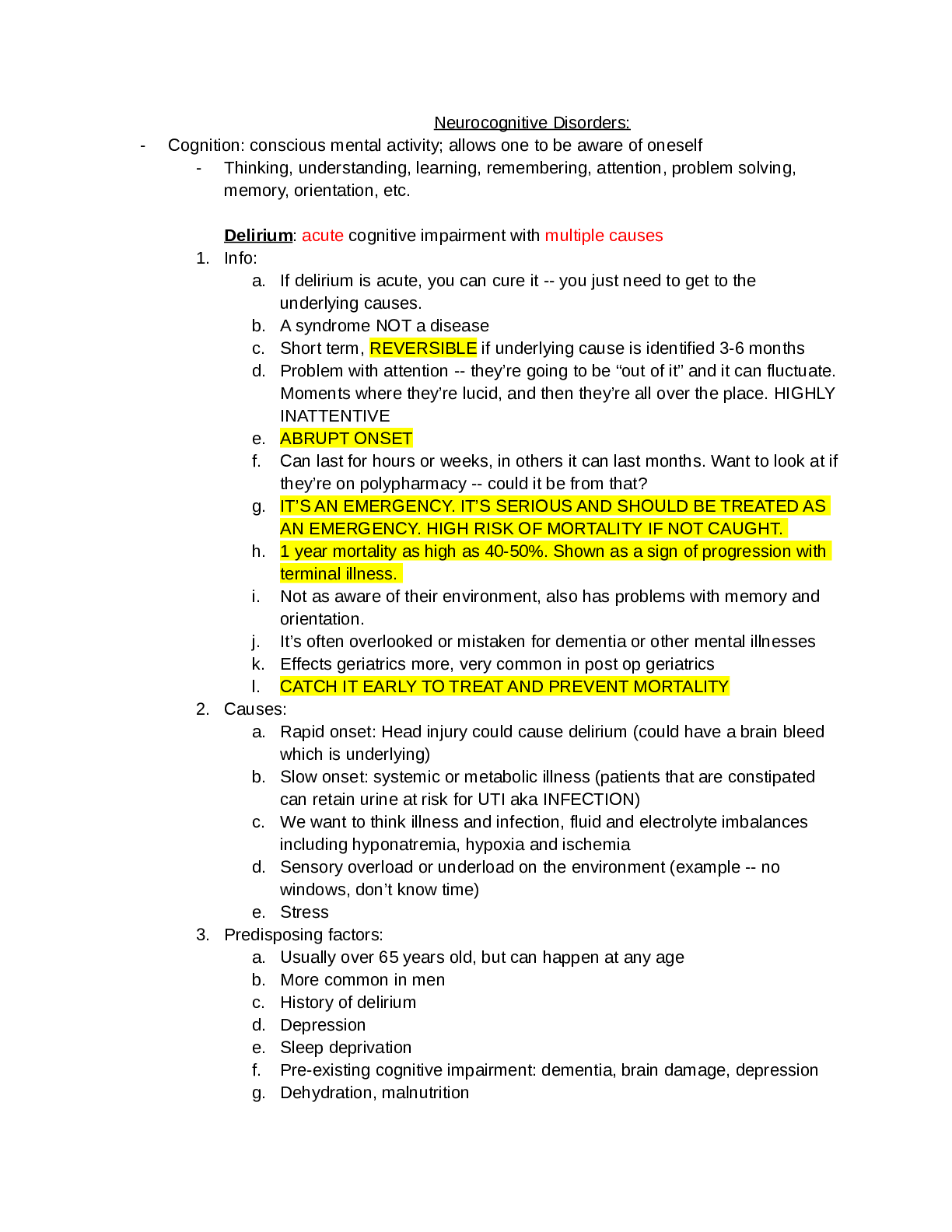
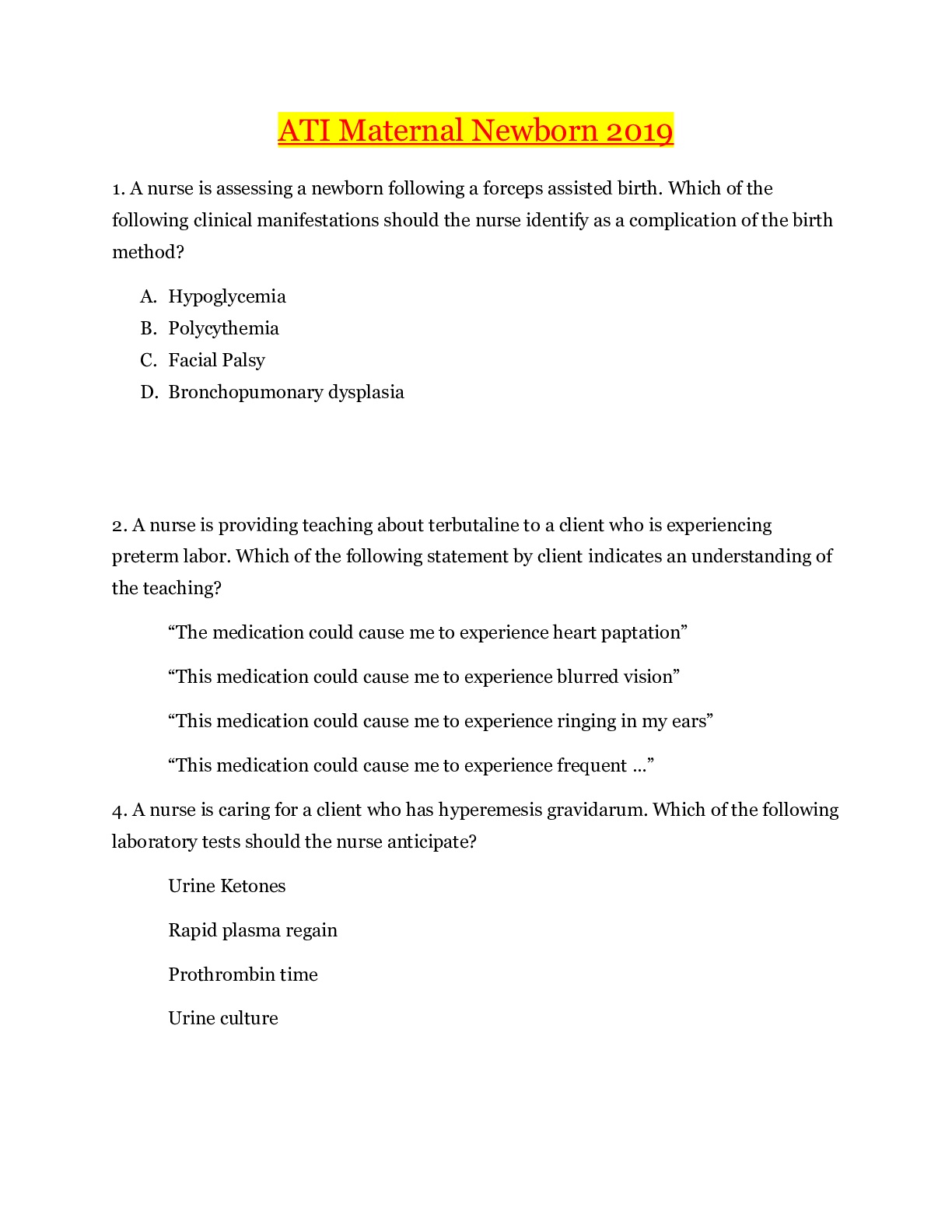
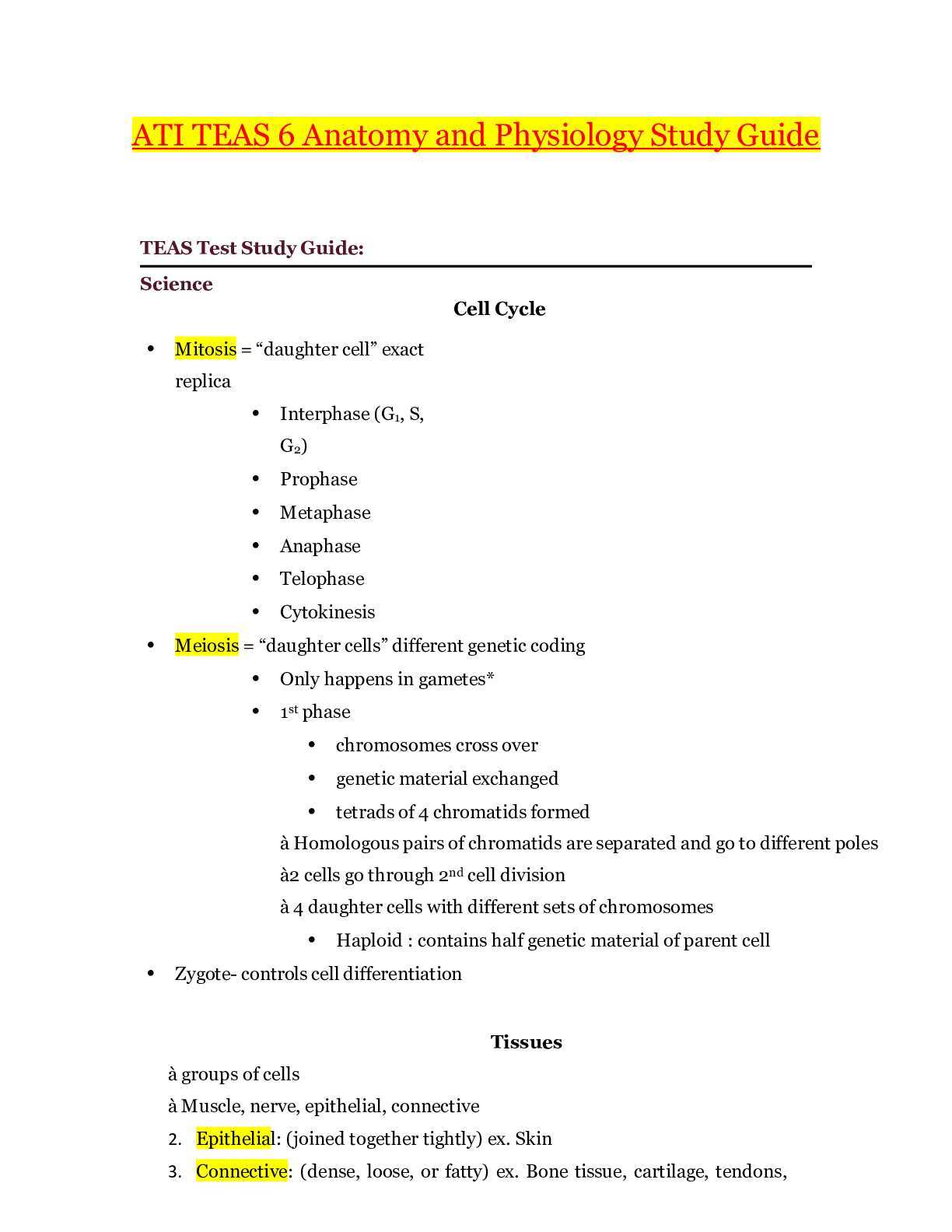

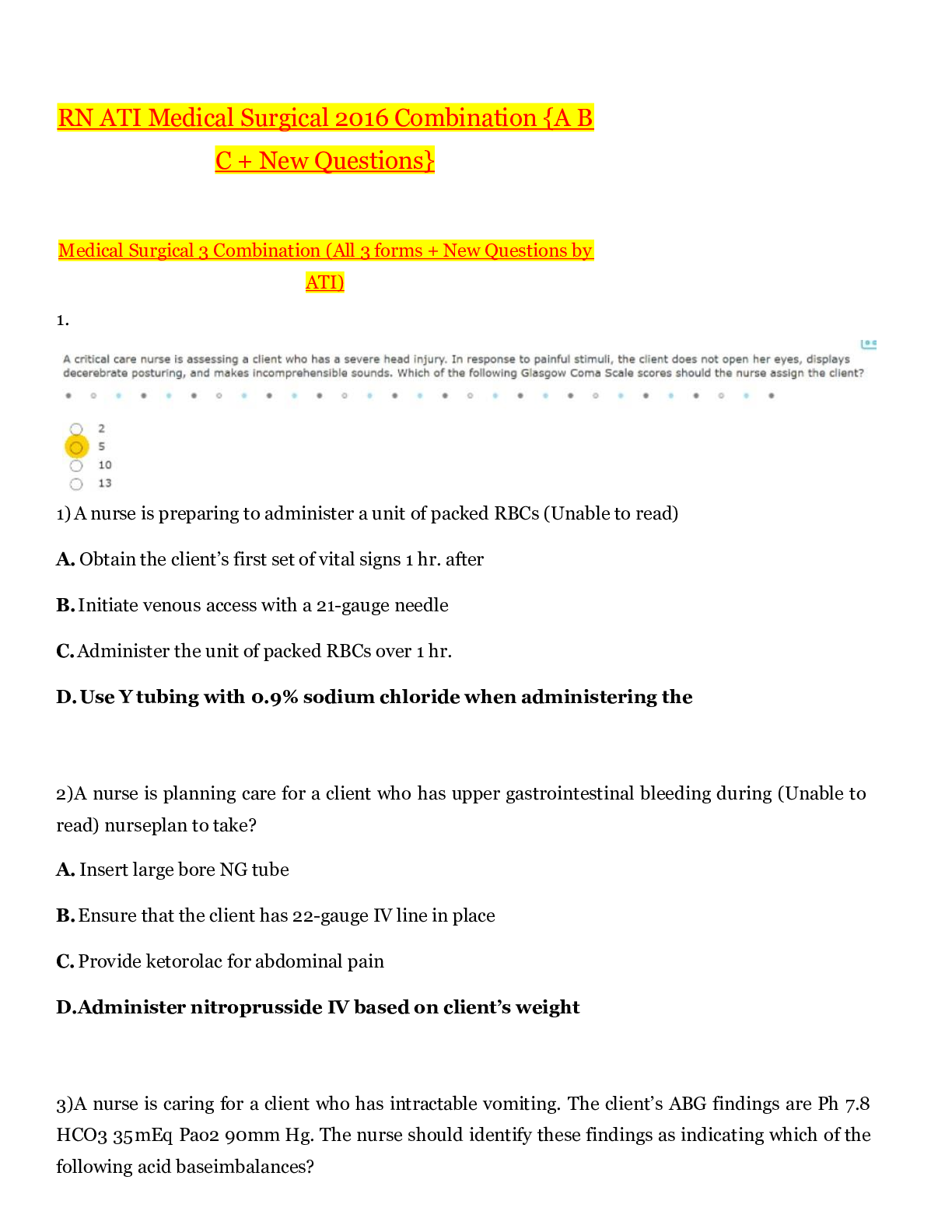
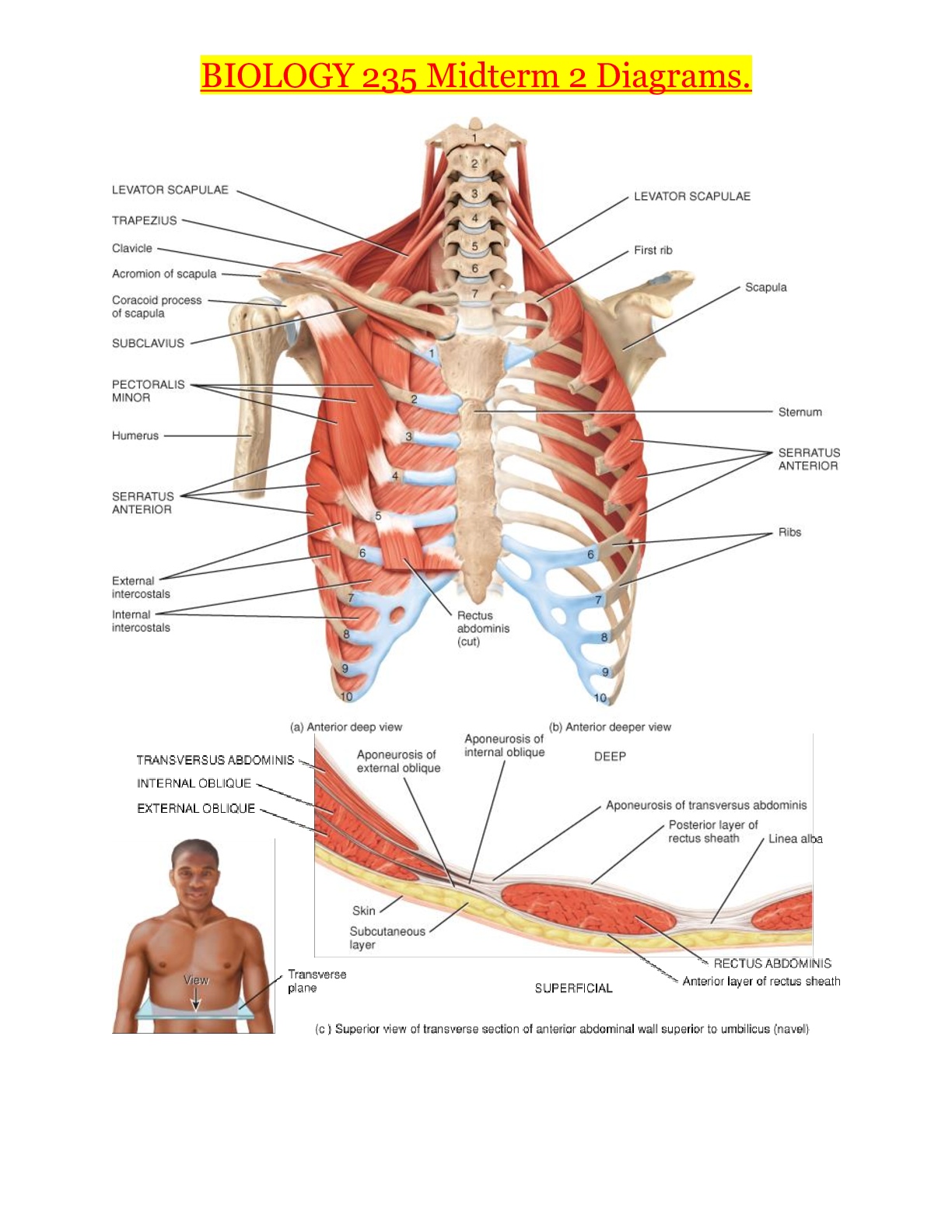
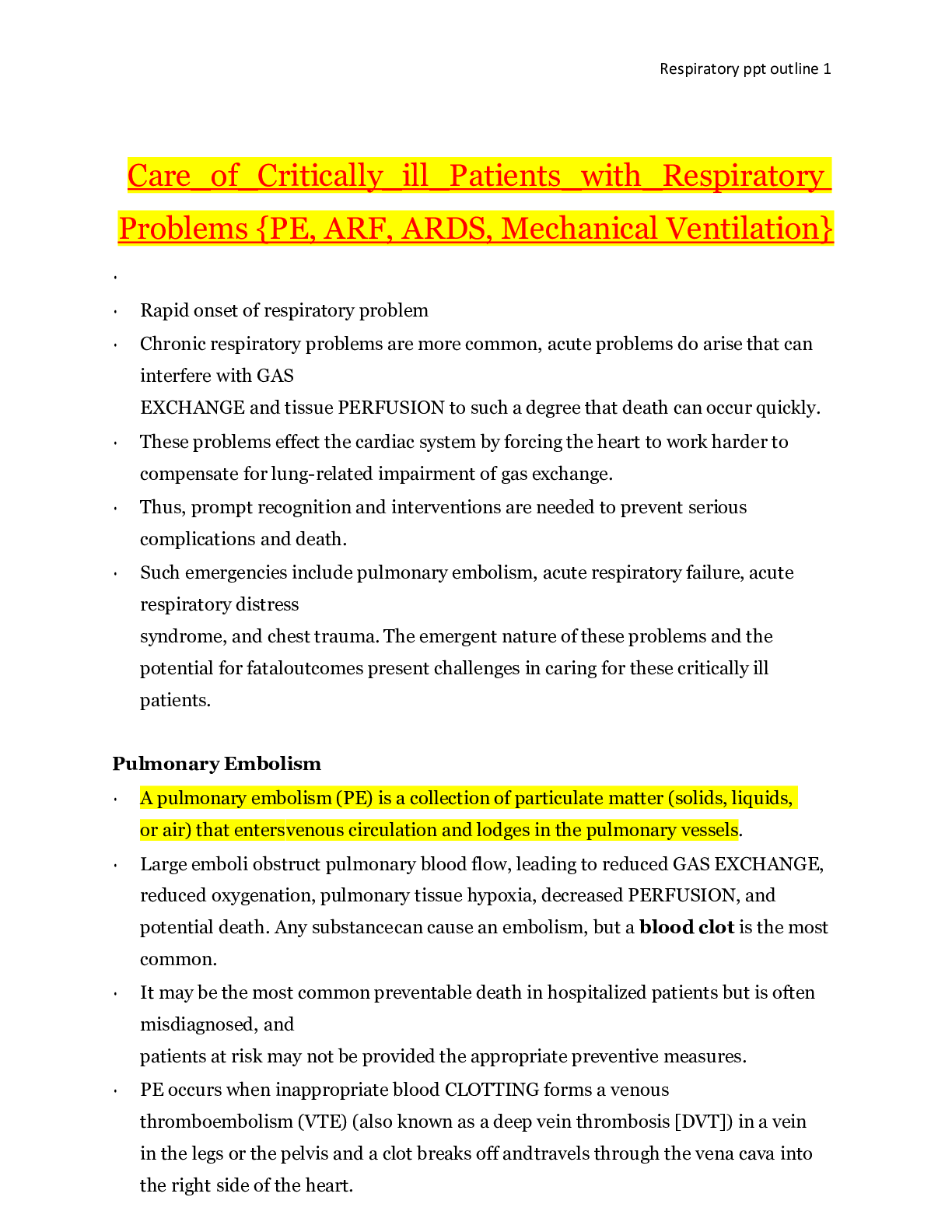
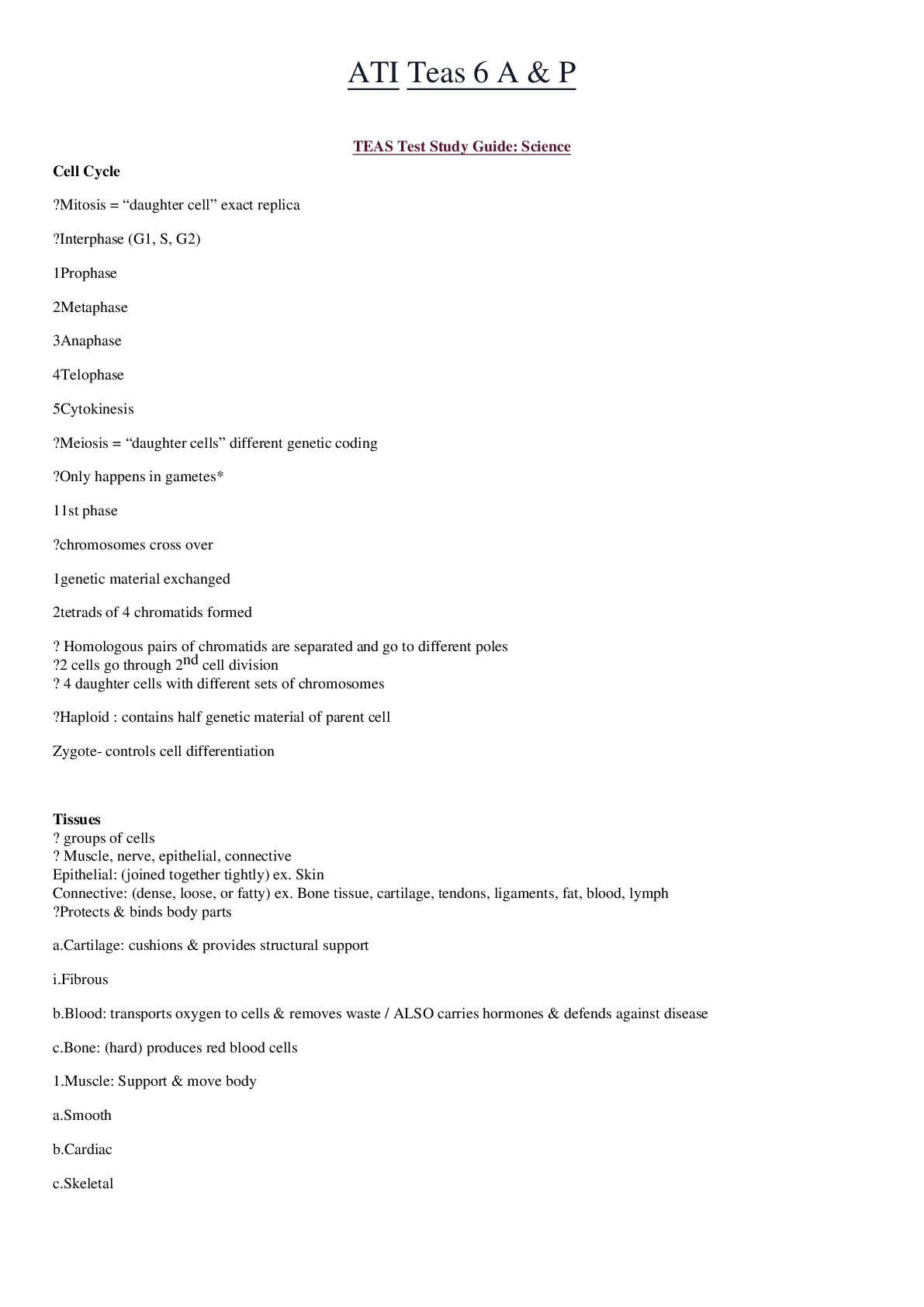
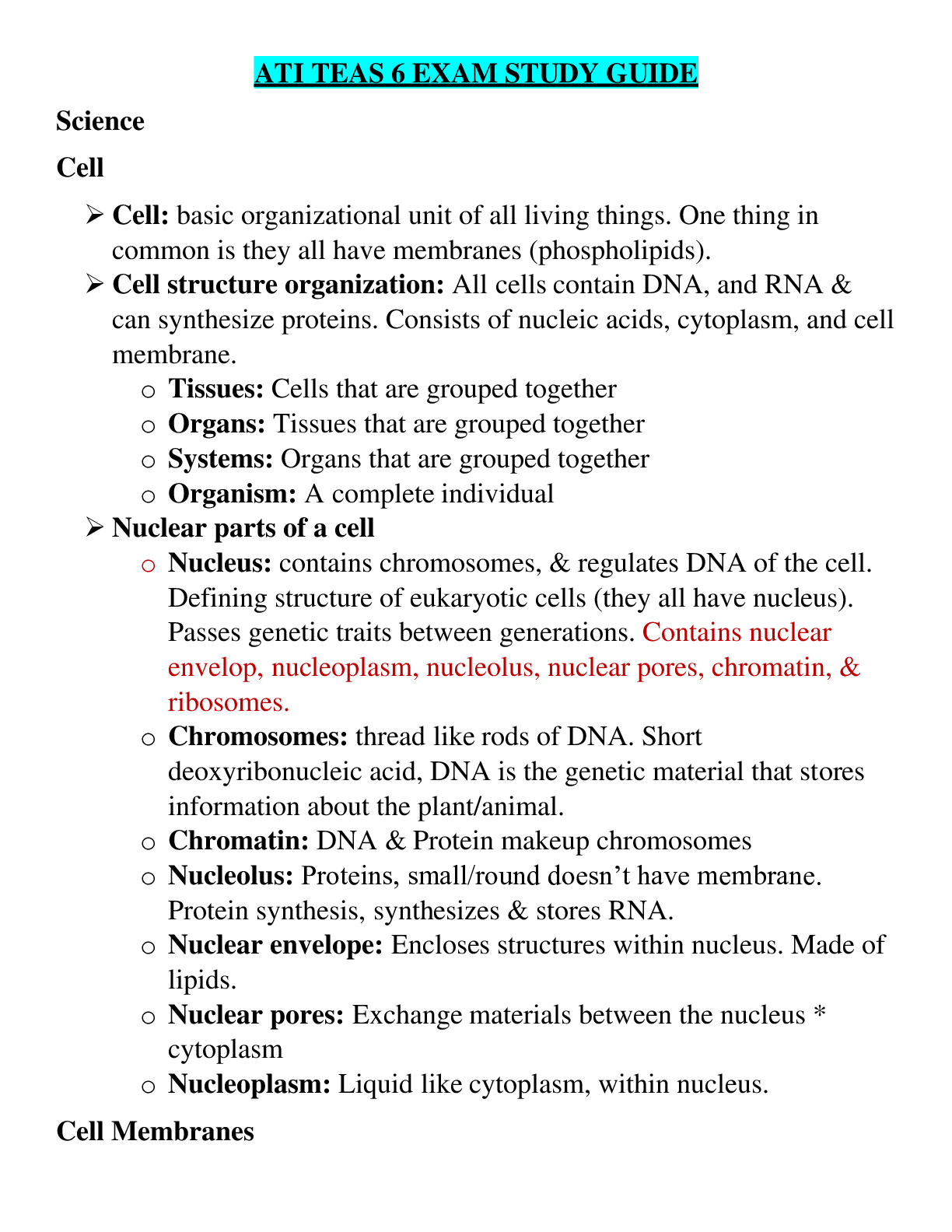




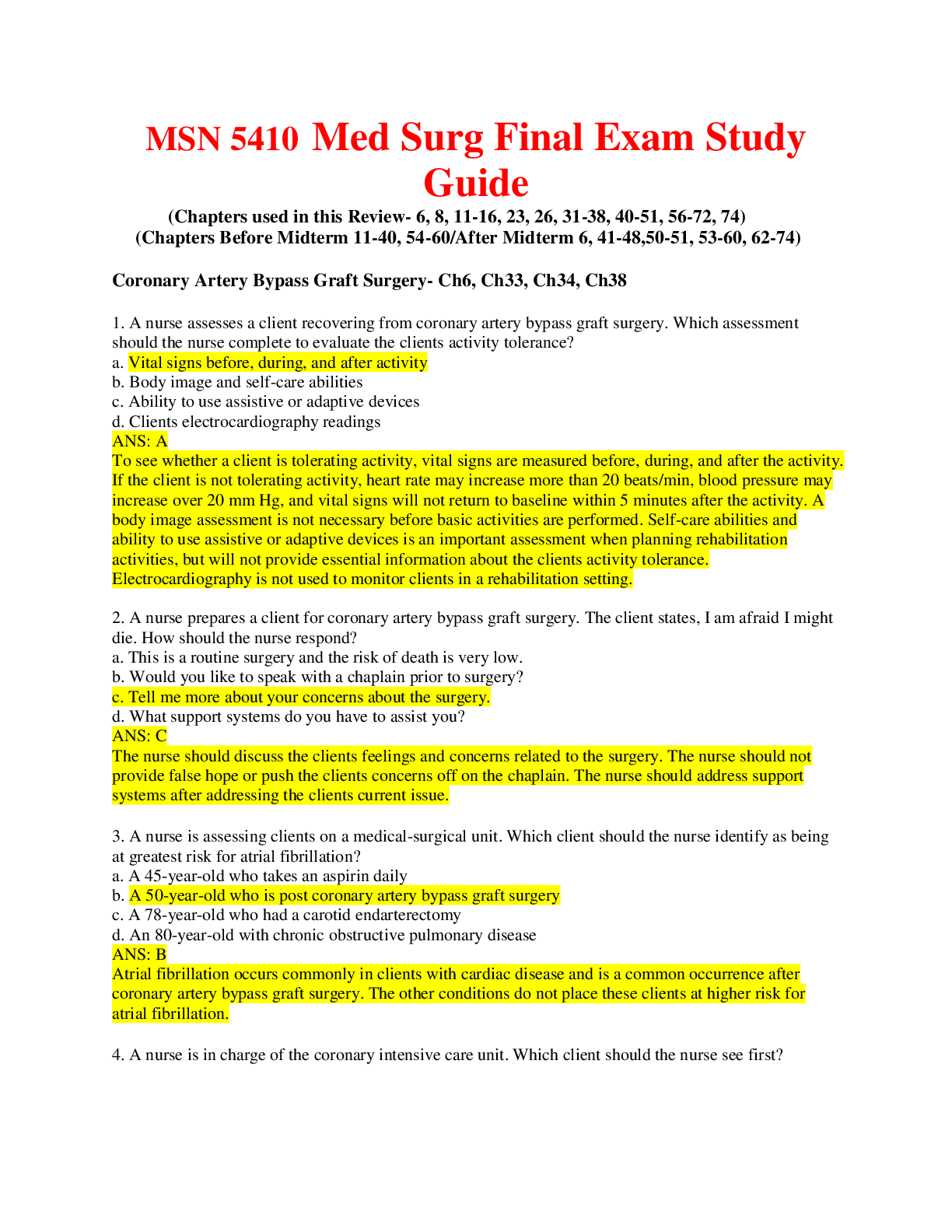

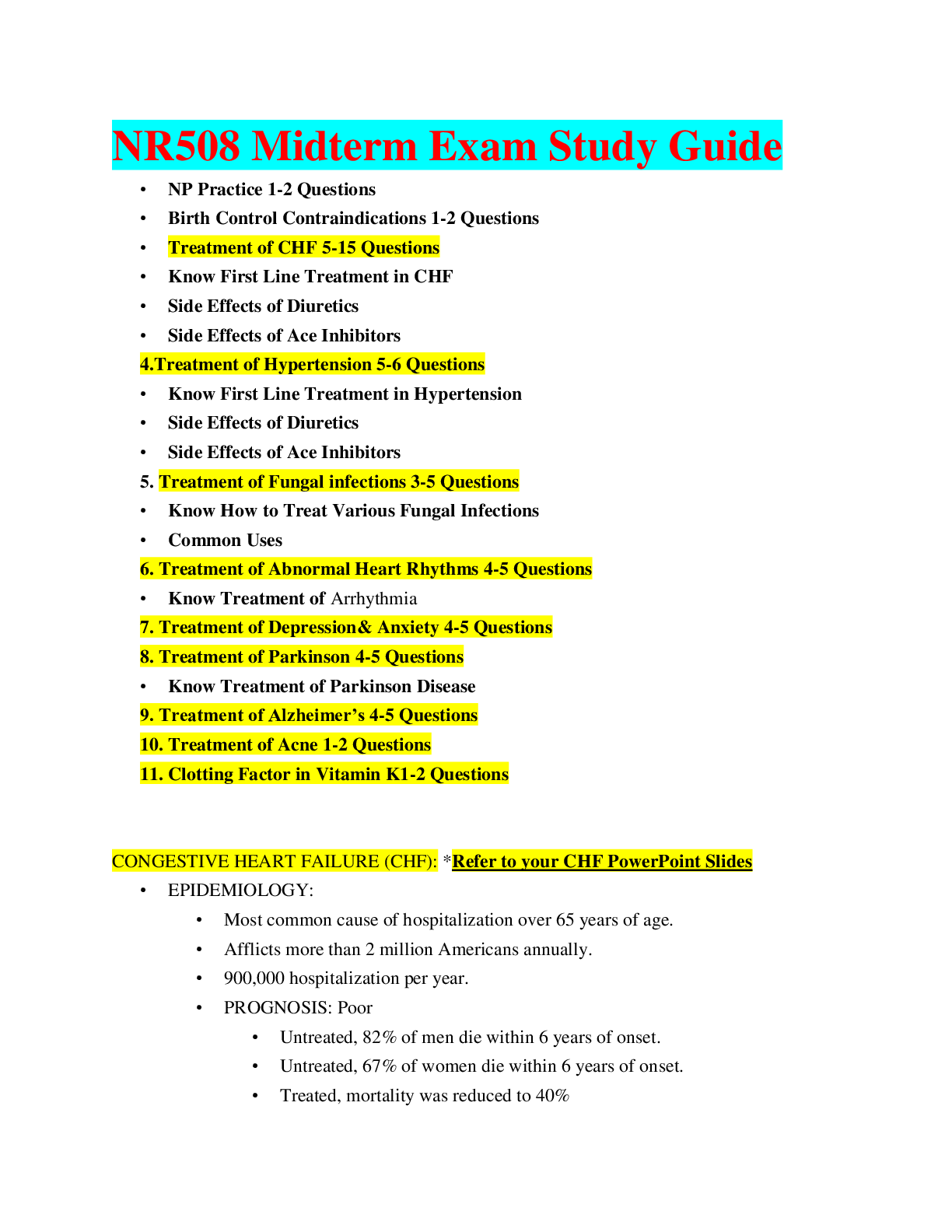

.png)

